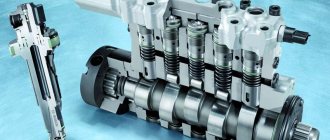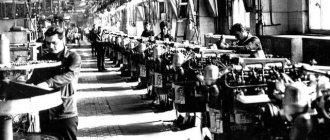DIESEL, RUDOLF
(1858-1913) German inventor
German inventor Rudolf Diesel was born in Paris in 1858. His father was a bookbinder. In 1871, when the Franco-Prussian War began, the family moved to England. They lived in poverty, so the boy was soon sent to relatives in the German city of Augsburg. There, the future inventor successfully graduated from school and in 1875 entered the Polytechnic Institute in Munich, where he studied thermodynamics with Karl von Linde. Diesel received his general education as a refrigeration engineer.
In 1880, he went to Paris to start working for the Linde company, which at that time was building a plant for the production of refrigeration units. The following year he received the position of director of this enterprise. Naturally, the new position obliged him to begin a scientific search, and he began developing a refrigeration unit that used ammonia as a refrigerant.
The search led Diesel to a dead end, but he was already addicted to scientific work, although there was no time to do it. In 1890, Diesel received a new assignment and moved to Berlin, continuing to work for the Linde company.
However, he devoted his own scientific developments to the search for a more efficient source of energy than the steam engine common at that time. Around 1890, Diesel begins to develop his new idea.
The scientist began experimenting with the internal combustion engine, trying not only to improve it, but also to make it so that cheaper types of fuel could be used. A long and painful search was crowned with success in 1892, when he received a patent for his engine. The essence of Diesel's invention was that he applied the principle of self-ignition of fuel from heating under strong compression.
In 1893, he published a message about his invention in many newspapers and began to look for sponsors for its implementation. Diesel managed to come to an agreement with two large companies at once - one in Augsburg and the company of Friedrich Krupp from Essen, which took part in the project.
The project took four years, from 1893 to 1897, when, according to Diesel's drawings, the first sample of an engine that did not have spark plugs was built at the Augsburg plant. It did not use gasoline, but a cheaper type of fuel, which was later called diesel fuel. The new engine had a simpler design than the gasoline engine, since it did not have a complex and expensive ignition system.
An independent opinion was given by Professor M. Schroter, and the invention itself was exhibited at the Munich exhibition in 1898.
In 1898, serial production of diesel engines began at the plant of the Swedish company Nobel in St. Petersburg. In 1899, a new plant for their production was built in Augsburg, but due to Diesel’s constant illnesses, it was not possible to establish production for a long time. Finally, the production of Diesel engines began not only in Augsburg and at Nobel enterprises, but also in France. The inventor himself quickly became a millionaire.
But real fame came to Diesel only in 1903, when the first two ships equipped with his engines were launched. It was the barge “Vandal” and the motor ship “Sarmat”. They walked along the Volga. Only after this did Diesel engines begin to be used all over the world.
The engine, named after its creator, became widespread primarily as part of ship power plants. However, easier starting compared to gasoline engines and consuming less fuel led to their use in taxis, buses and trucks.
In life, Rudolf Diesel was an easily vulnerable and uncommunicative person; he was often in a bad mood, became depressed, and could not work. The circumstances of his death are mysterious and tragic. On a September day in 1913, he took a boat to London. No one saw him again. It is believed that he committed suicide by throwing himself overboard the ship.
But the Diesel engine continues to exist and is receiving more and more new areas of application.











